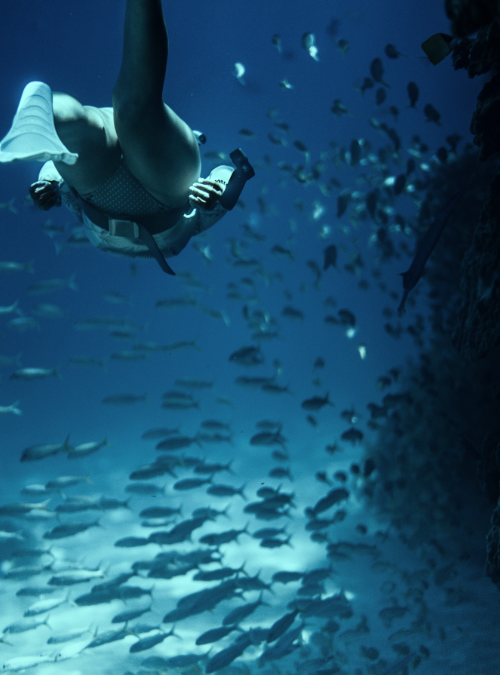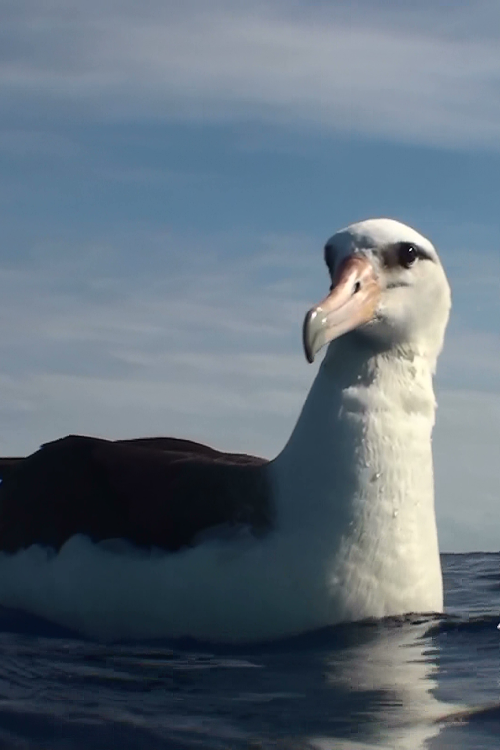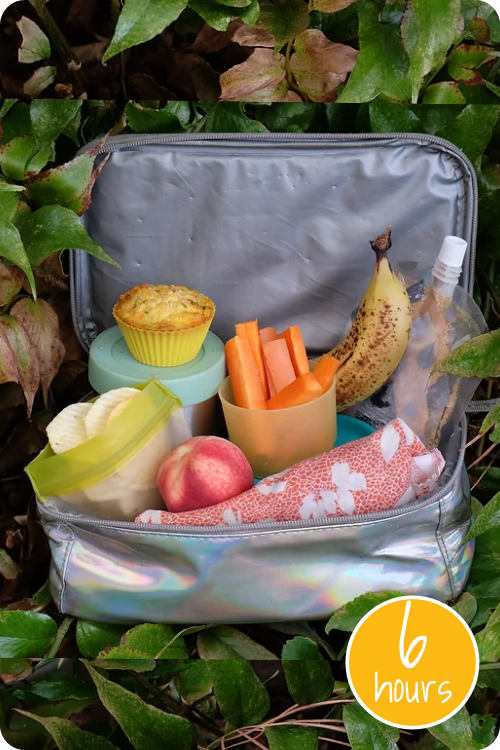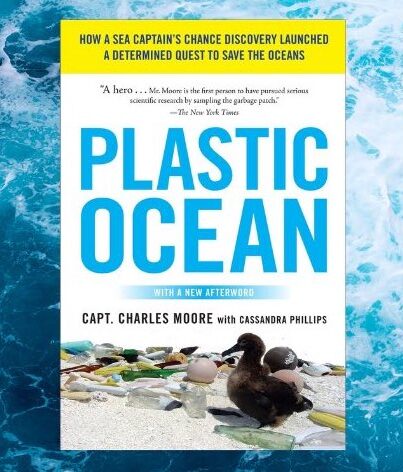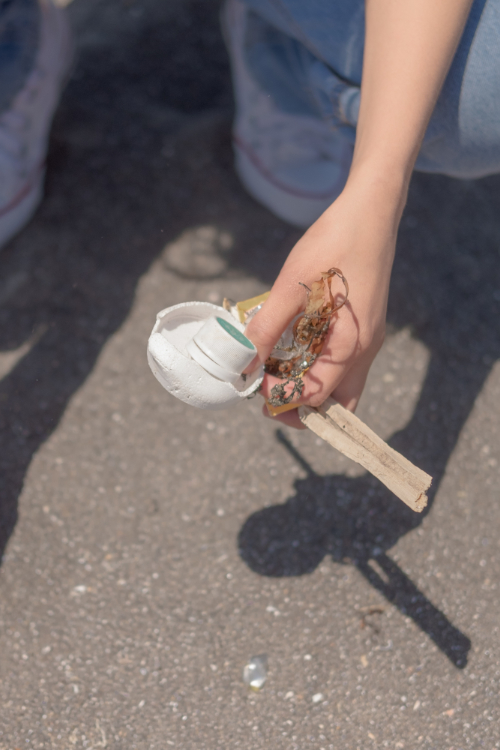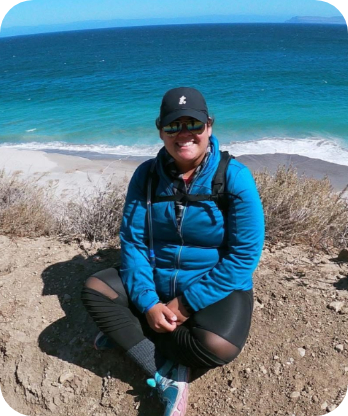
Meet an important yet little-known marine organism impacted by plastic pollution and understand why it is a key part of the marine food web and carbon cycle.
What is a lanternfish?
Lanternfish are some of the smallest and most abundant fish in our oceans and they have some important roles in the ocean’s food web. Lanternfish are about the size of a sardine or anchovy and they have small bioluminescence spots on their bellies. The scientific name for lanternfish is Myctophid.
Why are lanternfish important?
Because of their abundance and size, lanternfish are at the base of the oceanic food web. In addition to being an important food source, they also play a key role in the carbon cycle. By swimming down deep underwater everyday and excreting the plankton they ate in the surface waters, lanternfish help sequester, or separate, carbon from the atmosphere to the deep sea where it stays for a long time [1]. These fish are an important part of the carbon cycle and therefore, protecting them is also important for reducing climate change.
How are lanternfish being impacted by human activity?
Unfortunately, microplastics polluting the ocean are also impacting lanternfish populations. This is threatening the ocean’s ecological systems. One of Algalita’s studies in the North Pacific Ocean showed that 35% of the lanternfish collected had ingested plastic [2]. Read a summary of the research here. A more recent study found plastics had been ingested by 68% of the 364 lanternfish they collected [3].
Sources
[1] See Eduardo, L., Bertrand, A., Mincarone, M., et al. (2021) Distribution, vertical migration, and trophic ecology of lanternfishes (Myctophidae) in the Southwestern Tropical Atlantic, Progress in Oceanography, Volume 199, https://doi.org/10.1016/j.pocean available at https://www.sciencedirect.com/science/article/pii/S0079661121001798
[2] See Boerger, C., Lattin, G., Moore, S., Moore, C., (2010) Plastic ingestion by planktivorous fishes in the North Pacific Central Gyre, Marine Pollution Bulletin, Volume 60, Issue 12, https://doi.org/10.1016/j.marpolbul.2010.08.007. available at https://www.sciencedirect.com/science/article/pii/S0025326X10003814
[3] See Ferreira, G., Justino, A., Eduardo, L., et al. (2023). Influencing factors for microplastic intake in abundant deep-sea lanternfishes (Myctophidae), Science of The Total Environment, Volume 867
https://doi.org/10.1016/j.scitotenv.2023.161478. available at https://www.sciencedirect.com/science/article/pii/S0048969723000931.
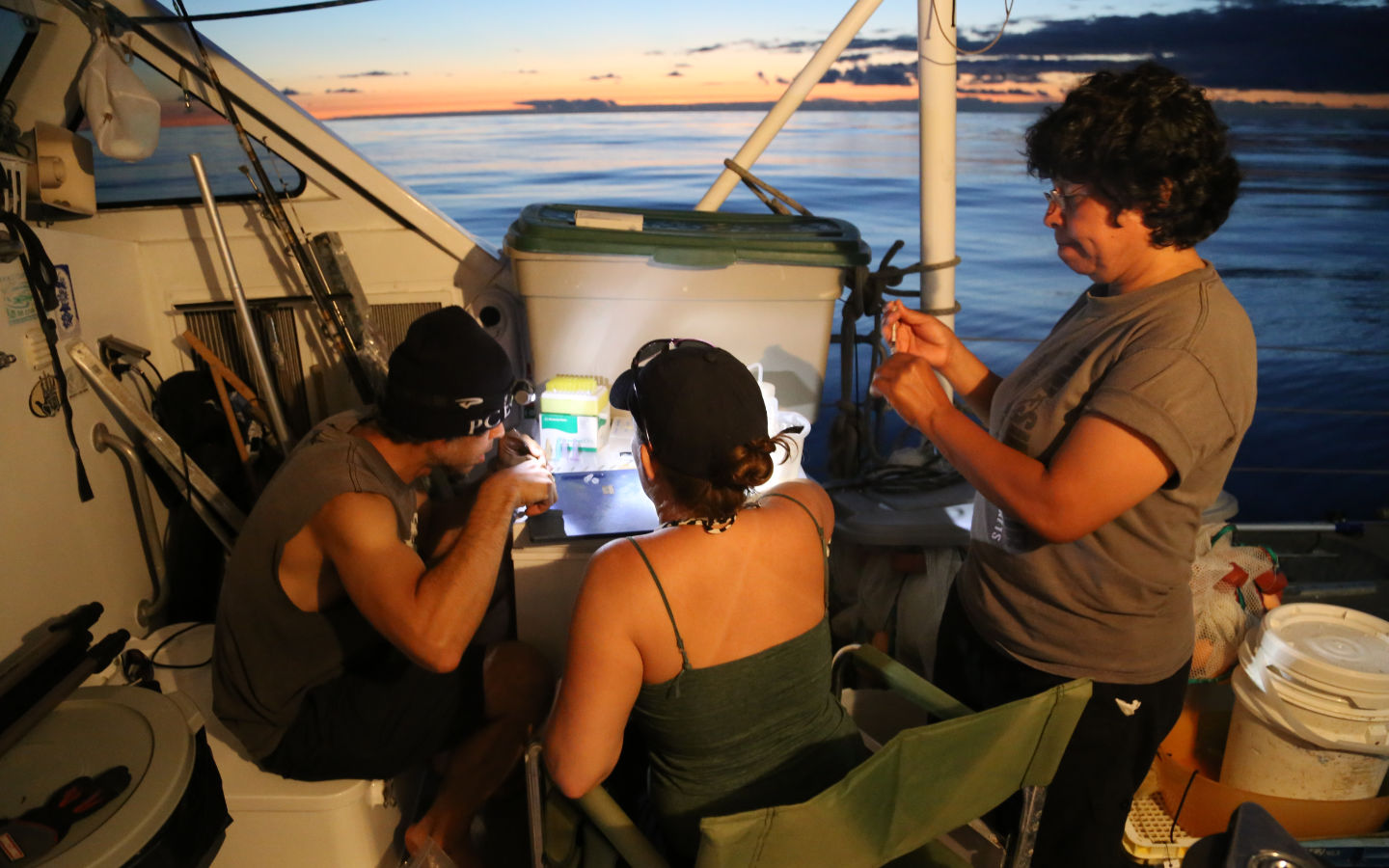
Scientists on board the Alguita take blood samples from lanternfish caught during a night trawl. Photo credit: Algalita, 2018.
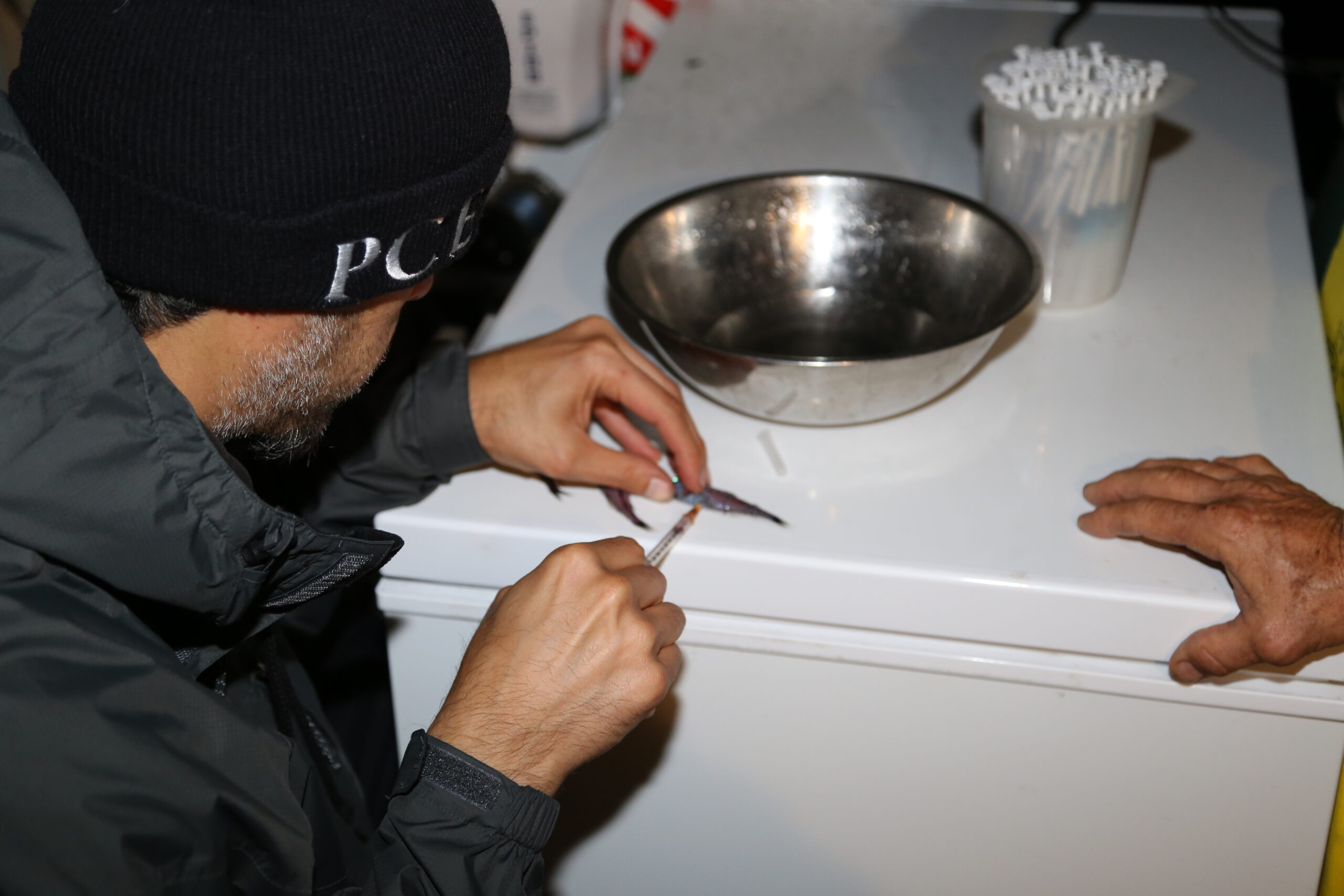
Scientists take a blood sample from a lanternfish to study the impacts of plastic ingestion. Photo credit: Algalita, 2018.
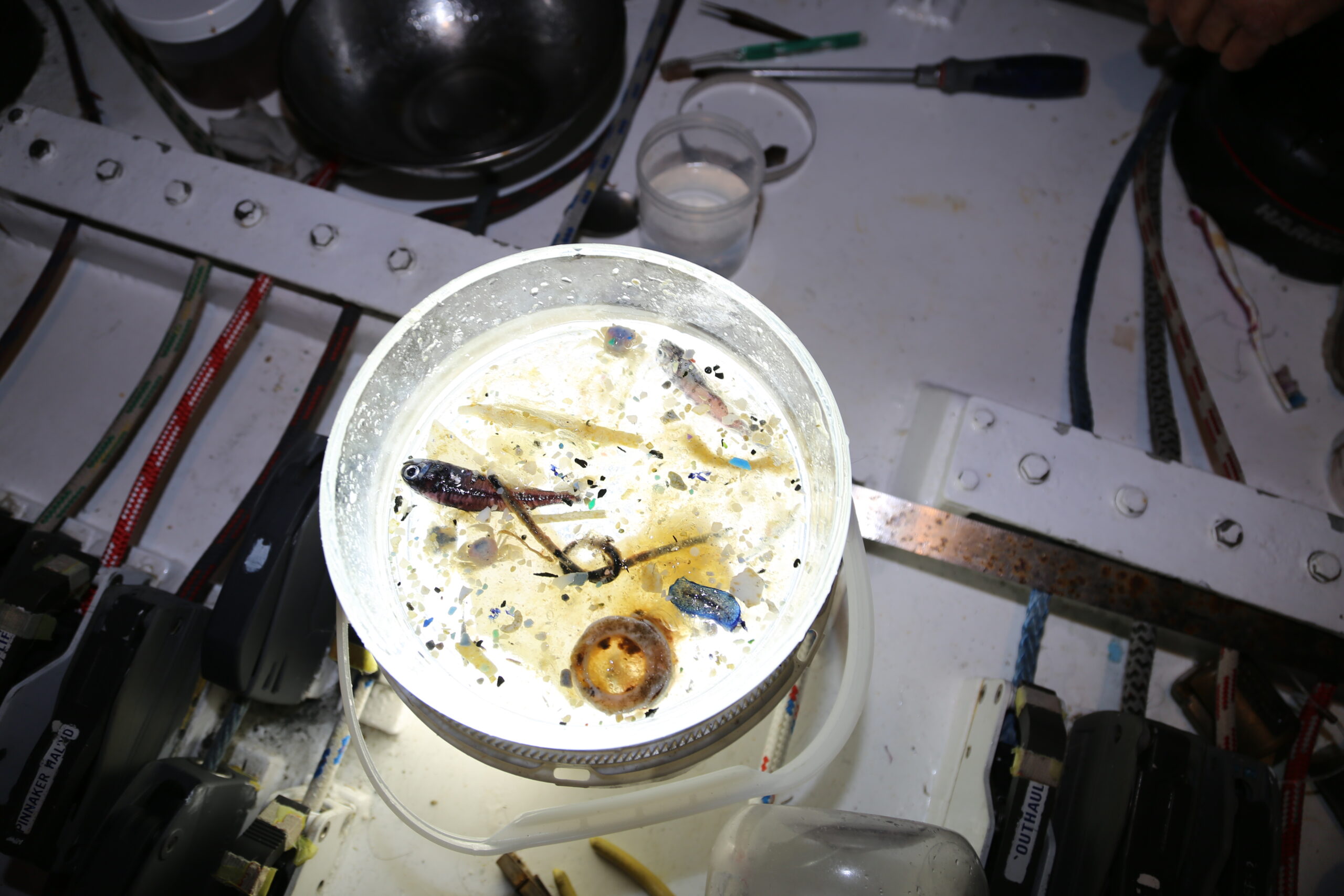
A bucket with an ocean water sample containing microplastics and plankton including a lanternfish. Photo credit: Algalita, 2018.
Related Resources
Lesson: Sources and Sinks
How does plastic get into and impact ecosystems?
Grades 4 and up
30 to 60 minutes
Students Take Action!
Explore more
How This Tiny Fish Is Cooling Our Planet
This video by Deep Dive goes deep into the life of lanternfish and how they impact the global carbon cycle.
Take a Swim in the Plastic Soup
Take a virtual swim through a plastic pollution accumulation area in the North Pacific Ocean.
Learn more
This is Our Ocean: Massive Aquaculture Debris Clump
Algalita scientists found a massive plastic pollution clump is the size of our research vessel and explored on, under, and around it.
This is Our Ocean: Rope Clump
Explore under the sea with our expedition crew as they investigate a common plastic pollution type - fishing rope.
Plastic Pollution Basics
A quick crash course on plastic pollution and what we can do about it!
Learn more

